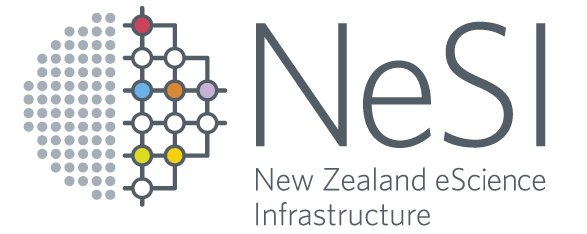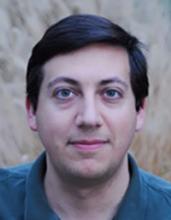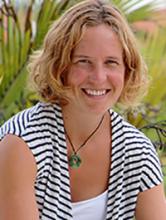Machine Learning & Supercomputing in Science
Join NeSI and Cray on Tuesday 25 September for a morning of lively discussion on machine learning and supercomputing in science. Hear from experts and innovators in the world of Artificial Intelligence (AI), including examples and opportunities for developing AI in New Zealand.

Tuesday 25 Sept
10:00 am -12:30 pm
Owen Glenn Building, University of Auckland
Click here to register
Webstream Available:
If you are unable to join us in person, watch our live webstream via Zoom:
https://auckland.zoom.us/j/338148090
Description:
Over the coming years, Artificial Intelligence (AI) will drive economic productivity and growth, improve public services, and enable scientific breakthroughs in areas such as healthcare, primary production, environment, autonomous technologies, and climate.
High-performance computing will be a fundamental element to AI’s ultimate success. While the promise of AI is alluring, what’s not being broadly discussed is how AI projects will stall if the platforms behind the AI can’t address the end-to-end workflow.
This event will kick off with AI experts from Cray presenting examples from machine learning deployments around the world and discuss the technology choices, challenges, and implementation. Following that, we will have New Zealand researchers presenting example case studies in this growing area, highlighting where the opportunities are within the context of New Zealand's research ecosystem. It will be an opportunity for discussion on how skills, workflows, and platforms change as new AI methods are adopted.
Guest Speakers:
Dr. Rangan SukumarSenior Analytics Architect, Office of the CTO, Cray
Rangan Sukumar is a Senior Analytics Architect in the CTO’s office at Cray Inc. His role is three-fold: (i) Solutions architect – Creating bleeding-edge solutions for scientific and enterprise problems in the long-tail of the Big Data market requiring scale and performance beyond what cloud computing offers, (ii) Technology visionary – Designing the roadmap for analytic products through evaluation of customer requirements and aligning them with emerging hardware and software technologies, (iii) Analytics evangelist – Demonstrating what Big Data and HPC can do for data-centric organizations. Before his role at Cray, he served as a group leader, data scientist and artificial intelligence/machine learning researcher scaling algorithms on unique super-computing infrastructures at the Oak Ridge National Laboratory. He has over 70 publications in areas of disparate data collection, organization, processing, integration, fusion, analysis and inference – applied to a wide variety of domains such as healthcare, social network analysis, electric grid modernization and public policy informatics.Dr. Charles Siegel
Solution Architect, Artificial Intelligence, Cray
Dr. Charles Siegel is an Artificial Intelligence Solution Architect at Cray Inc. working in machine learning on distributed systems at scale, along with applications. He leverages his background in abstract mathematics to devise novel techniques for scaling machine learning algorithms and gaining insights from data. Charles completed his PhD in Mathematics from the University of Pennsylvania in 2012 in Algebraic Geometry. He went on to a Mathematics Postdoc at the Kavli IPMU in Kashiwa, Japan and then transitioned fields to Machine Learning for a Postdoc at the Pacific Northwest National Laboratory in Richland, WA, working on HPC aspects of neural networks.Dr. James Maltby
Artificial Intelligence Solution Architect, Cray
Dr. James Maltby is an Artificial Intelligence Solution Architect for Cray, Inc. and specializes in mapping scientific and business applications to new computer architectures. He has an academic background in physics and engineering, specializing in radiation transport. He has worked for Cray since 2000, developing software for the massively multithreaded Cray XMT as a well as the other Cray systems. He also led the Bioinformatics practice at Cray for several years, using HPC to solve Life Science problems. In addition, he wrote a highly parallel in-memory Semantic Graph Database for the XMT architecture. His most recent project involved developing a Scalable Deep Learning and Analytics package for the Cray XC series of supercomputers, now available as Urika-XC.Per Nyberg
Vice President, Market Development, Cray
Per Nyberg is Vice President, Market Development, responsible for Cray’s worldwide Artificial Intelligence, Analytics and Cloud businesses, inclusive of product and market strategies, partnerships and alliances. In previous roles with Cray, he was Sr. Director for Business Development for Vertical Markets, including energy, cybersecurity, manufacturing and life sciences; and Earth Sciences Segment Director where he had the opportunity to work extensively with leading weather and climate centers worldwide and led the Cray Center of Excellence for Earth System Modeling located in Seoul, Korea. Prior to joining Cray, he worked for 12 years in NEC Corp’s high performance computing business in Canada, United States and Australia, in roles ranging from software engineering to business development.Dr. Cris Print
Professor, Department of Molecular Medicine and Pathology, University of Auckland
Cris Print graduated in Medicine from the University of Auckland in 1989 and began research while working as a house surgeon in Dunedin, NZ. A PhD in the University of Auckland led to a four-year postdoctoral fellowship in the Walter and Eliza Hall Institute in Melbourne, Australia using genetic modification techniques to study development and cell death. He then spent six years in Cambridge University, UK, where he was a Fellow of St Edmunds College and developed a deep interest in genomics and bioinformatics. While there he co-founded a bioinformatics biotechnology company that became listed on the Tokyo stock exchange in 2007. In late 2005 he returned to the University of Auckland where he leads a cross-disciplinary research team of clinicians, biologists, data scientists and statisticians who use genomics, systems biology and bioinformatics to better understand human disease, especially cancer. He leads the Genomics Into Medicine Strategic Research Initiative in Auckland and Chairs the Auckland Regional Tissue Bank Scientific Advisory Board. He is a member of the Board of Directors of the Crown Research Institute ESR and Vice President of the Auckland Museum Institute (the Auckland branch of the Royal Society of NZ), a Principle Investigator in the Maurice Wilkins Centre and member of the Science Leadership Team of the 'Healthier Lives' National Science Challenge. Previously, he has Chaired the New Zealand Genomics Limited Project Advisory Group, served as President of the NZ Society for Oncology and was Joint Director of the Bioinformatics Institute at the University of Auckland. Dr. Brent Martin
IT Solution Architect, Enviro-Mark Solutions Ltd; Computer Science researcher, Manaaki Whenua Landcare Research
Brent designs and builds IT solutions for Enviro-Mark Solutions. His software engineering expertise comes from decades of experience with top software and internet companies as well as teaching Software Engineering at the university level. Brent also conducts and directs research in machine learning at Manaaki Whenua Landcare Research, specialising in deep learning. Brent is an adjunct senior fellow of the department of Computer Science and Software Engineering at the University of Canterbury, where he previously lectured for 12 years. Brent has a strong interest in climate change and environmental action, and is part of various environmental and heritage groups. When not working, he can be found tending his orchard and vegetable gardens, walking in the hills, or playing music and directing his local choir.Dr. Jane Allison
Associate Professor and Rutherford Discovery Fellow, University of Auckland
Jane obtained a BSc (Hons) in Biochemistry from the University of Canterbury in 2003, conducting her Honours research with Prof. Juliet Gerrard, then did her PhD with Prof. Chris Dobson in the Department of Chemistry at Cambridge University as an inaugural Woolf Fisher scholar. From 2007 until 2012, she worked as a postdoctoral research assistant in the computer-aided chemistry group of Prof. Wilfred van Gunsteren at the ETH in Zürich, Switzerland. Jane took up a Lectureship at Massey University in 2012, where she was also a member of the Centre for Theoretical Chemistry and Physics. She was promoted to Senior Lecturer in 2014 and to Associate Professor in 2017, and awarded a Rutherford Discovery Fellowship in 2015. In 2018, Jane moved to become an Associate Professor at the University of Auckland. She is also an Associate Investigator with the Biomolecular Interaction Centre at the University of Canterbury, and with the Maurice Wilkins Centre for Molecular Biodiscovery. Jane’s research involves the development and application of computational methods for exploring the conformational dynamics of proteins. Investigating the relationship between the physico-chemical nature of biological molecules and their behaviour, in terms of structure, dynamics and thermodynamics, is crucial for understanding the function and malfunction of biological systems. Computer simulations are extremely valuable for probing these aspects at both the detailed molecular and ensemble level, as well as uniquely allowing direct and simultaneous visualisation of structure and dynamics.
MCs:
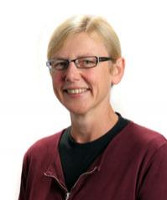
Professor, Department of Computer Science, University of Auckland
Professor Gillian Dobbie is from the Department of Computer Science at the University of Auckland. Although she has a broad understanding of computer science, her passion is in getting the most out of data, which includes how it can be processed efficiently, and the insights we can gain from it. She has most recently worked in anomaly detection in data streams, which can be applied in many areas, such as detecting change in social media streams, or detecting fraud in online auctions. Previously, she worked in the foundations of database systems, defining logical models for various kinds of database systems, and reasoning about the correctness of algorithms in that setting. With colleagues at the National University of Singapore, she defined a data model for semistructured data (called ORA-SS), providing a language independent description of the data. Her work ranges from theory to application, proving the correctness of algorithms through to experimental computer science. Gillian received a PhD from the University of Melbourne in 1995. She has published more than 115 peer-reviewed research papers, and served as a reviewer for numerous conferences and journals.
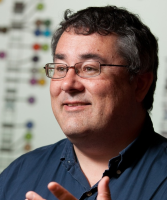
Professor, Chair in Biostatistics, Department of Statistics, University of Auckland
Thomas Lumley is Professor of Biostatistics at the University of Auckland. His research covers a wide range of topics in biostatistics, including genomics, the design and analysis of complex epidemiological studies, meta-analysis, and statistical computing and graphics. He is a member of the R Core Development Team. He writes about statistics in the media at statschat.org.nz.
Agenda:
- 10:00 am - Welcome
- 10:00 - 11:10 am - Machine Learning, Supercomputing and Science
- 11:10 am - 12:10 pm - Highlights and examples from New Zealand
- 12:10 - 12:30 pm - Discussion: AI opportunities in New Zealand
- 12:30 pm - Wrap up
Venue:
Decima Glenn Room, Owen Glenn Building
12 Grafton Road
University of Auckland
More Information:
If you have questions or would like more information, contact events@nesi.org.nz.
This event is brought to you by:
